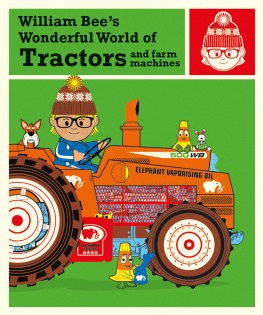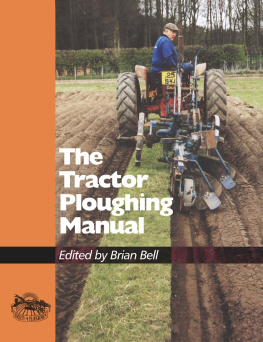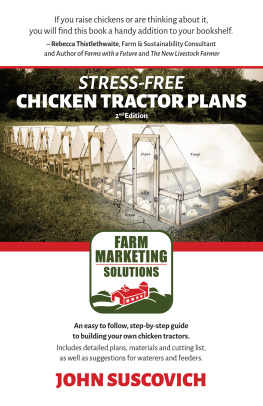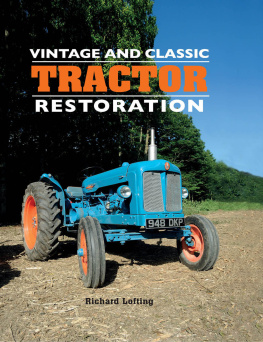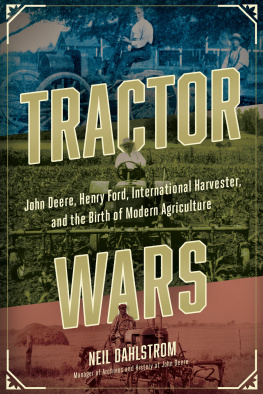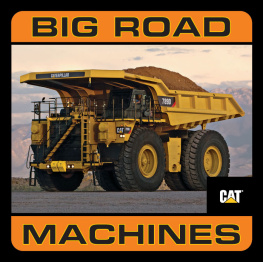Gaines Tharran E. - How to Restore Your Farm Tractor
Here you can read online Gaines Tharran E. - How to Restore Your Farm Tractor full text of the book (entire story) in english for free. Download pdf and epub, get meaning, cover and reviews about this ebook. year: 2020, publisher: Quarto Publishing Group USA, genre: Home and family. Description of the work, (preface) as well as reviews are available. Best literature library LitArk.com created for fans of good reading and offers a wide selection of genres:
Romance novel
Science fiction
Adventure
Detective
Science
History
Home and family
Prose
Art
Politics
Computer
Non-fiction
Religion
Business
Children
Humor
Choose a favorite category and find really read worthwhile books. Enjoy immersion in the world of imagination, feel the emotions of the characters or learn something new for yourself, make an fascinating discovery.

- Book:How to Restore Your Farm Tractor
- Author:
- Publisher:Quarto Publishing Group USA
- Genre:
- Year:2020
- Rating:4 / 5
- Favourites:Add to favourites
- Your mark:
- 80
- 1
- 2
- 3
- 4
- 5
How to Restore Your Farm Tractor: summary, description and annotation
We offer to read an annotation, description, summary or preface (depends on what the author of the book "How to Restore Your Farm Tractor" wrote himself). If you haven't found the necessary information about the book — write in the comments, we will try to find it.
How to Restore Your Farm Tractor — read online for free the complete book (whole text) full work
Below is the text of the book, divided by pages. System saving the place of the last page read, allows you to conveniently read the book "How to Restore Your Farm Tractor" online for free, without having to search again every time where you left off. Put a bookmark, and you can go to the page where you finished reading at any time.
Font size:
Interval:
Bookmark:
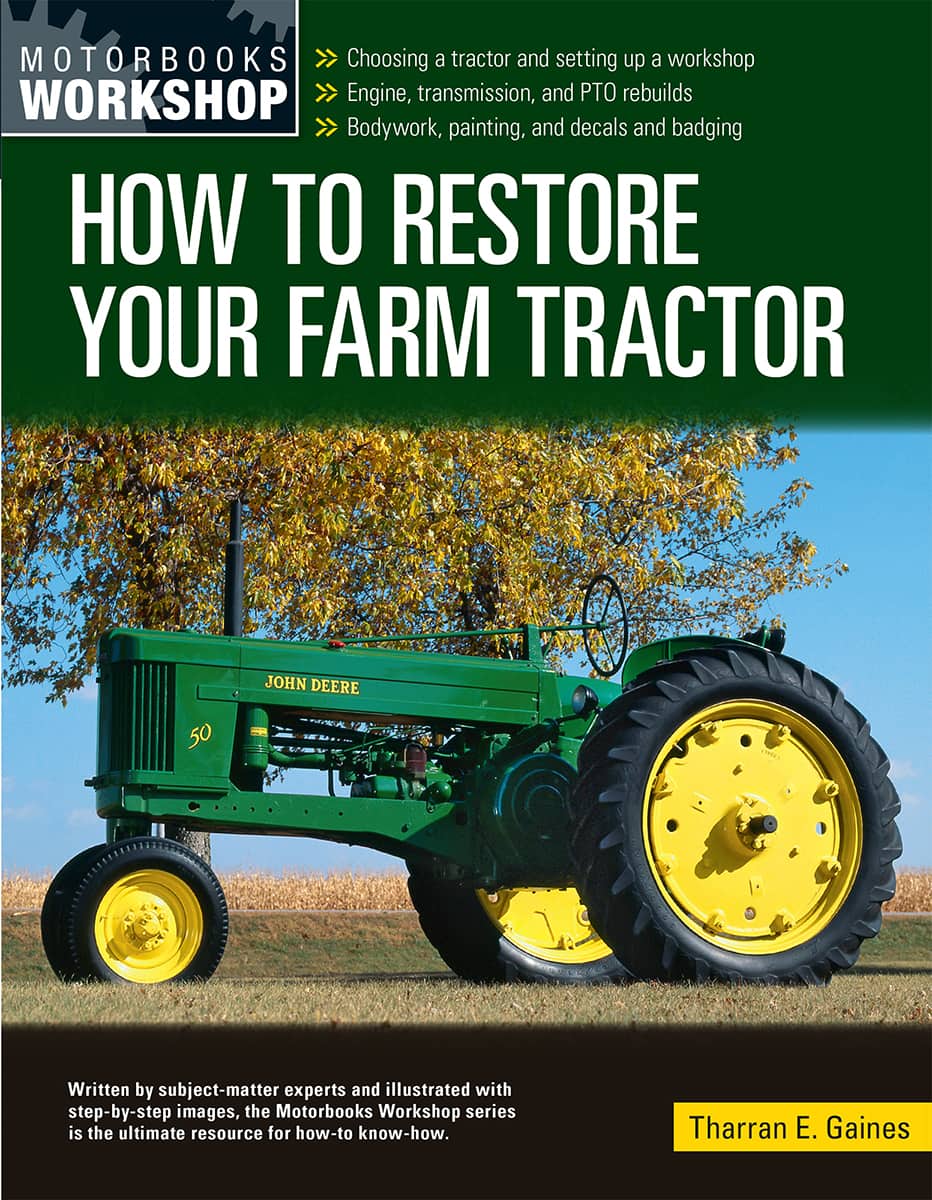

Tharran E. Gaines

S o you want to try your hand at restoring a vintage farm tractor? If youre like some antique tractor enthusiasts, you already have a tractor picked out, or at the very least, a particular model in mind. For many people, tractor restoration is a matter of nostalgia. The first model they want to tackle is the one they most fondly remember from their childhood. If they didnt grow up on a farm, perhaps its a model their grandfather had owned, and they remember taking rides on it during the summer.
On the other hand, you may want to get into tractor restoration in order to take part in the growing number of clubs and activities that revolve around antique tractors. Whether your interest is in antique or vintage tractor pulling, tractor shows, or just driving your restored treasure in the county fair parade, theres nothing that generates pride like participating in such an event with a tractor that you restored with your own hands. The camaraderie that comes with being part of such a group is invaluable, as well.
There are some people, however, who just want a quality work tractor without the cost of buying a new or late-model machine. They dont have any interest in taking it to a show or putting it on display. They just want something to pull a rotary mower or a three-bottom plow. By restoring one of the rugged workhorses from yesteryear, theyre able to get all the tractor they need at a reasonable cost.
Which category you fall into will make a big difference on which model is best suited to your needs. Some of the most collectible tractors make poor working machines whereas some less collectible tractors are fine workhorses. It makes little sense to put the time and money into restoring a rare model, only to put it in the field.
By the same token, extensive restoration of an extremely common tractor model may not be worth the cost and the many hours of labor it takes to restore it to running condition. Trying to break loose a frozen piston on a Farmall M is an effort in futility as you can spend a lot less time and money finding one in running condition at a farm sale.

With literally hundreds of tractors to choose from, the selection of a vintage tractor for restoration comes down to your personal preference and plans for the finished product. This beautifully restored Allis-Chalmers Model B is owned by Carmin Adams of San Jose, California. Hans Halberstadt
True rarities, however, are an entirely different matter. In those cases, the restorer is basing the tractor evaluation simply on what is left of the prospective tractor and what he or she can afford to invest. Mechanical and cosmetic condition are secondary.
There is one common rule of thumb for most restoration prospects: A complete tractor that doesnt run, especially if it has good sheet metal, is worth more than an incomplete tractor that does run, particularly if it has poor sheet metal. In most cases, its a lot easier to get the engine running or replace the transmission than to repair or replace sheet metal that has been destroyed by rust. Ironically, it may cost more to replace the sidesheets or engine cover panels used on an Oliver Fleetline tractor than to have the engine itself overhauled.

The quality of the restoration work that went into this International Harvester Farmall Super M shows over every inch of the machine. Hans Halberstadt
If youre buying and restoring a tractor for working an acreage, or to use as a backup tractor, the first thing you need to considereven before selecting a particular modelis how the tractor and implements are to be used. If you plan to cultivate row crops, for example, you probably wont be happy with a Ford N Series tractor or an Oliver Super 55 since both are low-profile tractors with minimal ground clearance. On the other hand, if you plan to mow sidehills and road ditches with a three-point-hitch-mounted mower, you may want to steer clear of a narrow-front John Deere B or a high-crop Farmall; the maneuverability might be satisfactory, but the rollover potential is not worth any savings you might garner.
Once youve considered the jobs you have in mind, you need to look at the implements you plan to use. From this, you can calculate your horsepower needs and make sure the tractor model you select has the weight and power to do the job. Again, someone who is planning to pull a 10-foot disc harrow is going to be unhappy with a Farmall Cub or an Allis-Chalmers G. Youll need to consider, too, the need for hydraulic power or a three-point hitch.
The best insurance against buying the wrong model is to do your research and talk to a few farmers or tractor owners who have similar operations.

Antique tractor collectors often look for unusual models or variations within their favorite brand, such as this rare Wheatland version of an Allis-Chalmers D-17.
If youre buying a tractor strictly as a collector model, you need to realize that a whole different set of rules applies. You must also consider whether youre collecting the model for its value on the market or its sentimental value to you alone. As an example, some tractor restorers simply have a desire to restore and collect all the models within a certain series, such as the John Deere 60 Series models or the D Series in the Allis-Chalmers line.

Any high-crop model is highly collectible. In fact, some restorers spend years scouring the country to find a model like this Farmall MV high-crop.

Tractors like this Ford 8N have always been sought after as solid work tractors for farms, hobby farms, vegetable gardens, nurseries, and the like. This 8N was restored by Palmer Fossum of Northfield, Minnesota. Chester Peterson Jr.
A WORD ABOUT HORSEPOWER
I f youre planning to use your restored tractor as a working tractor, one of the things youll want to be aware of is the horsepower rating. But what exactly is horsepower?
Technically speaking, horsepower is defined as the amount of energy or work required to raise a weight of 33,000 pounds to a height of one foot in one minute, or to overcome or create a force equivalent to doing that amount of work. Unfortunately, not all of the horsepower generated by the engine is available to pull a load or drive a PTO-powered implement. Part of it is lost to friction in the engine, inefficiency in the transmission, the power required just to turn the axles and tires, and so on.
Font size:
Interval:
Bookmark:
Similar books «How to Restore Your Farm Tractor»
Look at similar books to How to Restore Your Farm Tractor. We have selected literature similar in name and meaning in the hope of providing readers with more options to find new, interesting, not yet read works.
Discussion, reviews of the book How to Restore Your Farm Tractor and just readers' own opinions. Leave your comments, write what you think about the work, its meaning or the main characters. Specify what exactly you liked and what you didn't like, and why you think so.

